BRICKLAYING BONDS
Walking around Haxby it is interesting to see the different bricklaying bonds that have been used. On most buildings in Britain
nowadays plain stretcher bond is used but in the past more variations were regularly used. In some places a vast variety or brick bonds can be seen on the old buildings but in Haxby there are three bonds that are obvious.
The main brick bonds are as follows:
Walking around Haxby it is interesting to see the different bricklaying bonds that have been used. On most buildings in Britain
nowadays plain stretcher bond is used but in the past more variations were regularly used. In some places a vast variety or brick bonds can be seen on the old buildings but in Haxby there are three bonds that are obvious.
The main brick bonds are as follows:
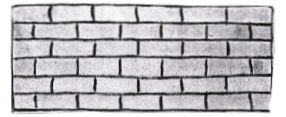
Stretcher Bond
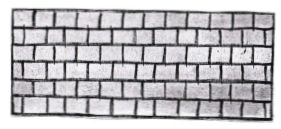
Header Bond
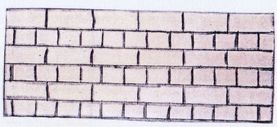
English Bond
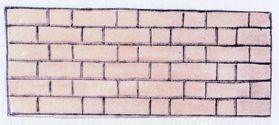
Flemish Bomd
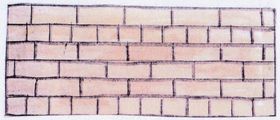
English Garden Wall Bond
(Sometimes there are 4 or 5 rows of stretchers in this kind of bond)
(Sometimes there are 4 or 5 rows of stretchers in this kind of bond)
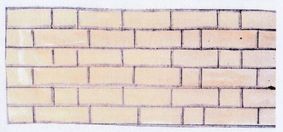
Flemish Garden Wall Bond (Sussex Bond)
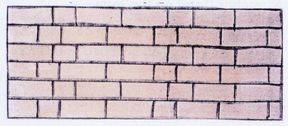
Monk Bond (Yorkshire or Flying Bond)

Rat Trap Bond
Surprisingly. there seem to no buildings in Haxby where Yorkshire bond has used. In fact the only recognisable that cam be on the walls of older houses are Stretcher Bond, Flemish Bond and English Garden Wall Bond. The most used bond was English Garden Wall Bond.
Along The Village the houses where this bond can be seen include numbers 56, 75, 77, 89, 91, 92 and 94.
Those along The Village where Flemish Bond has been used include 59, 65, 67, 69, 78, 85.
There are several of the oldest houses where it is impossible to recognise a definite bond.
Numbers 51 and 53 were built using a mixture of bonds as are many others.
The front elevation of The Tiger Inn and also Old Chestnut House (Mentone) is in Flemish Bond but the side wall is in English Garden Wall Bond,
Some of the old houses are in Stretcher Bond but this may indicate that wall may have rebuilt. Conversely. of the newer buildings of machine brick. (i.e. The Hospice Shop) have built using English Garden Wall Bond on the side walls but plain Stretcher Bond on the front.
The Memorial Hall, built in 1876 has Stretcher Bond at the front but is decorated with bands of dark blue brick.
The Northern Scientific building, formerly the Primitive Methodist chapel built in the mid 19th Century is attractively decorated at the front with pilasters of orange machine made brick. The side walls are of English Garden Wall Bond.
Almost all of the old walls surrounding gardens in the centre of Haxby were built using English Garden Wall Bond.
Along The Village the houses where this bond can be seen include numbers 56, 75, 77, 89, 91, 92 and 94.
Those along The Village where Flemish Bond has been used include 59, 65, 67, 69, 78, 85.
There are several of the oldest houses where it is impossible to recognise a definite bond.
Numbers 51 and 53 were built using a mixture of bonds as are many others.
The front elevation of The Tiger Inn and also Old Chestnut House (Mentone) is in Flemish Bond but the side wall is in English Garden Wall Bond,
Some of the old houses are in Stretcher Bond but this may indicate that wall may have rebuilt. Conversely. of the newer buildings of machine brick. (i.e. The Hospice Shop) have built using English Garden Wall Bond on the side walls but plain Stretcher Bond on the front.
The Memorial Hall, built in 1876 has Stretcher Bond at the front but is decorated with bands of dark blue brick.
The Northern Scientific building, formerly the Primitive Methodist chapel built in the mid 19th Century is attractively decorated at the front with pilasters of orange machine made brick. The side walls are of English Garden Wall Bond.
Almost all of the old walls surrounding gardens in the centre of Haxby were built using English Garden Wall Bond.
